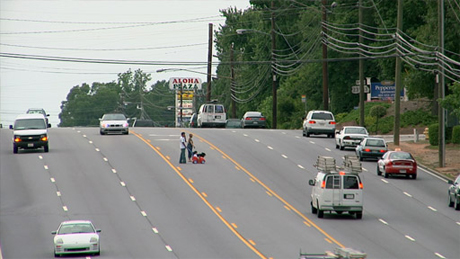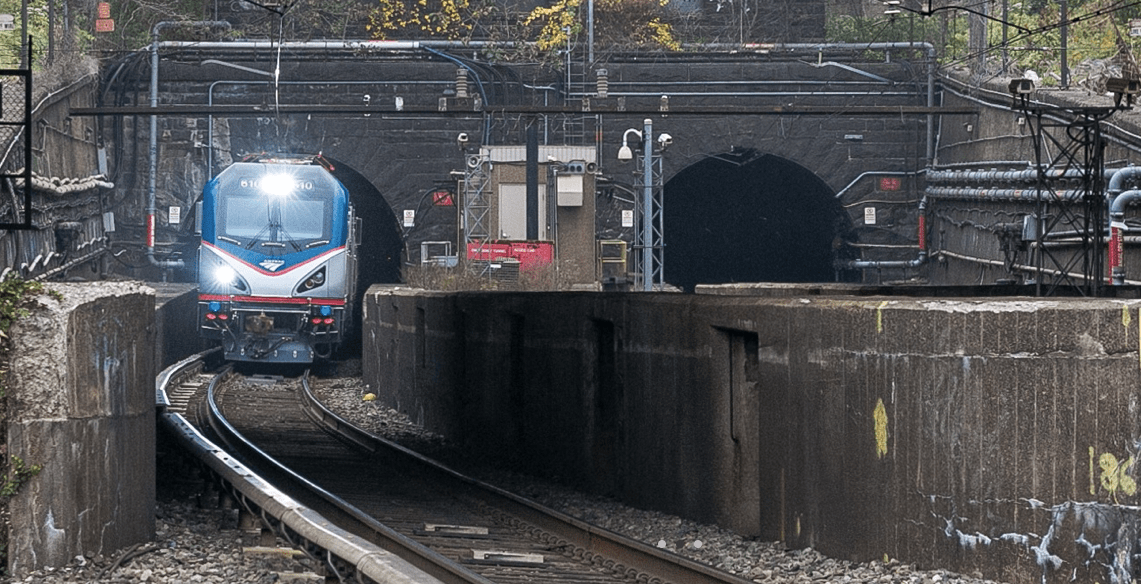Jim Aloisi is a Boston-based lawyer, historian and transportation policymaker. He is a former Massachusetts state secretary of transportation. His most recent book is The Vidal Lecture.
Tanzeel Merchant is a Toronto-based urban designer, architect, planner and writer. He writes for Forbes India.
As cities across North American densify, innovate and refocus their priorities, there is a shared acknowledgement that the era of the automobile is over, and other modes of mobility, such as walking, cycling and transit, are in ascendance. However, these changes are constrained by powerful legacies of our past -- the existing, auto-centric infrastructure of highways, inequitable transportation funding across modes, and outdated ways of thinking.

Times have changed, and our planning and review processes need to change along with them. We now live in an era where young people are choosing not to get drivers’ licenses and buy cars, or are delaying those decisions, and older people are drawn to the virtues of a healthier lifestyle. Despite these trends, many transportation officials continue to shortchange funding for the mobility offered by walking and bicycling. Many streets, especially in new suburban neighborhoods, are not pedestrian friendly. Bicycle routes (if they exist at all) are often poorly designed and unsafe. Equitable funding for these modes of transportation is not, and has never been, a reality.
Safe walking and biking ought to be a right, not a privilege. A spate of recent tragedies involving pedestrians and bicyclists points to the urgent need to make mobility safety a critical element of new focus. If you hit a pedestrian at 20 mph, 5 percent will die; at 30 mph, 45 percent will die; at 40 mph, 85 percent will die.
Walking and bicycling are also cost-savers for cities. Integrating these modes into street designs comes at a small cost, with huge returns in terms of reduced vehicular congestion, lower emissions, less wear and tear of roads, stronger local economies and more vibrant neighborhoods.
Planners and decision-makers need a better approach to ensure active transportation is safe and convenient. We propose requiring public infrastructure and transportation projects to undertake a Safety Impact Review (SIR) as part of the process of permitting projects meeting certain thresholds. An SIR would ensure that desired outcomes are baked into development and infrastructure projects right from the start.
The SIR is the safety counterpart to the environmental reviews that emerged as an important outcome of the great citizen activist movements of the 1960s and 70s -- movements that pushed back hard on the kind of transportation planning and construction made infamous by New York City’s Cross Bronx Expressway. Environmental reviews entail the examination of transportation projects’ effects on air quality, wetlands and open space.
The Safety Impact Review that we propose would require projects meeting a certain financial or scale threshold -- such as public infrastructure and utilities, building development or redevelopment, and parks and public space projects -- to demonstrate impacts on bike and pedestrian safety and accessibility, measured against set metrics. The outcomes can be reviewed and impacts mitigated to maximize safety. By establishing clear thresholds for an SIR, we can ensure that it will not add undue time or expense to implementing smaller scale improvements like pedestrian islands or bike lanes in discrete urban environments. The SIR would be structured to encourage safe multi-modal mobility, with a specific focus on three desired outcomes:
- Reduced likelihood of crashes and injury or death (pedestrians, bicyclists, transit users, and drivers)
- Greater access to, and increased use of, streets and open space
- Maximized access to light, public open space, ventilation, and recreation opportunities
For those who think this will add to costs and red tape, we would point to the unacceptably high costs of inaction -- bodily injury and death, the costs of litigation, and the loss of economic growth (expressed as both private sector investment and housing values). Pedestrian- and bicycle-friendly neighborhoods score higher on all these factors.
Political leaders are emerging who are ready to break down the barriers. New York City Mayor Bill de Blasio has made the issue of mobility safety a priority of his new administration, pointing to what he calls an “epidemic of traffic fatalities,” which nearly equaled homicides last year in New York City. DeBlasio’s “Vision Zero” initiative has the goal of eliminating traffic deaths within a decade. He is marshaling the collective efforts of several city agencies, including the police department, asking them to develop a comprehensive plan to tackle bike and pedestrian safety issues.
De Blasio is one of many civic leaders who taking on this challenge. The development and use of a Safety Impact Review can help deliver on this promise.
By baking a Safety Impact Review into the transportation planning, design and construction process, we can take luck and good intentions out of the equation and establish clear, transparent, achievable and measureable metrics that projects must meet in order to move ahead. Achieving these metrics will ensure a high degree of confidence that public safety and convenience considerations have been vetted thoughtfully as required components of a final permitted project. Such a process will provide a critical boost for modal equity and multi-modal mobility.
The era of highway expansion is over. Our future lies in creating a truly multi-modal transportation network -- a robust menu of meaningful choices that enable people to pick-and-choose among modes and make walking and bicycling real mobility options. The Safety Impact Review will go a long way in ensuring that the infrastructure we invest in today delivers the kinds of cities we want tomorrow for ourselves and for future generations.





